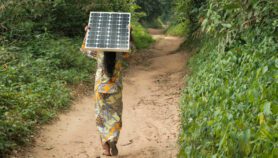By: Hepeng Jia
Send to a friend
The details you provide on this page will not be used to send unsolicited email, and will not be sold to a 3rd party. See privacy policy.
[BEIJING] China has released an ambitious plan to develop renewable energy to cut its surging carbon dioxide emissions.
The ‘Middle and Long-term Development Plan of Renewable Energies’ promises to derive ten per cent of China’s energy supply from renewables by 2010 and 15 per cent by 2020.
The plan was published yesterday (4 September) by China’s energy watchdog, the National Development and Reform Commission (NDRC).
"I know these big targets [for renewables] have not been made by many countries, and they are also a great challenge to us," said Chen Deming, vice-chairman of NDRC, at a news conference.
The total investment needed to meet the 2020 goal will be two trillion yuan (US$133.3 billion), according to the plan.
China plans to increase its annual hydropower generating capacity from 170 million kilowatts in 2005 to 300 million kilowatts by 2020. It also seeks to increase the production of plant-based ethanol from one million tonnes to ten million tonnes, and its wind power generating capacity from 1.3 million kilowatts to 30 million kilowatts by 2020.
According to Chen Deming, renewable energy currently accounts for nearly eight per cent of China’s energy supply, while coal accounts for 70 per cent — causing severe pollution and high carbon dioxide emissions.
The renewable energy plan estimates that, if its targets are met, by 2010 China will emit 600 million tonnes less carbon dioxide a year. By 2020, the annual reduction in carbon dioxide emissions will reach 1.2 billion tonnes.
Chen Ying, deputy director of the Research Centre for Sustainable Development of the Chinese Academy of Social Sciences, welcomes the move. But she says that to reduce carbon dioxide emissions, cutting current industrial energy consumption is, financially, a better option.
She added that any plans should also consider the rural poor, providing alternative sources of sustainable energy such as methane stoves, which burn farm waste.













